In fashion, certain pieces transcend time and become iconic symbols of style and culture. One such piece is the bowler hat. With its distinctive round crown and stiff brim, the bowler hat has stood the test of time, remaining a beloved and influential accessory for both men and women.
Contents
- Section 1: Introduction to Bowler Hats
- Section 2: Effective Communication and Order Management
- History of the Bowler Hat
- Construction and Design of Bowler Hats
- Bowler Hats in Pop Culture
- Bowler Hats in Movies and Television
- Bowler Hats in Literature and Art
- Bowler Hats in Music and Entertainment
- Bowler Hats Around the World
- Bowler Hats as Cultural Icons in Specific Countries
- Bowler Hats in Traditional Costumes and Festivals
- Maintaining and Preserving Bowler Hats
- Cleaning and Care Tips for Bowler Hats
- Restoring and Repairing Bowler Hats
- Collecting and Valuing Bowler Hats
- Storage Recommendations
- Conclusion: The Timeless Appeal of the Bowler Hat
- The Timeless Appeal of the Bowler Hat
- The Enduring Legacy of the Bowler Hat
Section 1: Introduction to Bowler Hats
1.1 History of the Bowler Hat
The history of the bowler hat dates back to the mid-19th century when it was created as a practical and durable headwear option for gamekeepers and horse riders. Originally designed by Thomas and William Bowler, the bowler hat quickly gained popularity among the working class due to its sturdy construction and ability to withstand harsh weather conditions.
Over time, the bowler hat evolved from its functional origins to become a symbol of status and refinement. It became a favorite among the upper classes, who embraced its sleek and polished appearance.
1.2 Construction and Design of Bowler Hats
Bowler hats are typically made from felt or wool, providing a sturdy yet comfortable fit. The hat’s crown is rounded and sits low on the head, while the brim is stiff and slightly upturned at the edges. The hat is often adorned with a grosgrain ribbon or hatband.
While the basic design of the bowler hat remains consistent, there have been variations in style and embellishments throughout the years. From subtle tweaks in the crown height to different brim widths, these variations allow wearers to choose a bowler hat that suits their style.
In the upcoming sections, we will explore the impact of bowler hats in fashion, their representation in popular culture, their significance in different countries, and even tips on caring for and collecting these timeless accessories.
So, whether you’re a fashion enthusiast, a history buff, or simply curious about the enduring appeal of the bowler hat, join us as we delve into the captivating world of this iconic headwear. From its historical roots to its modern interpretations, we will uncover the fascinating journey of the bowler hat and celebrate its timeless status as an icon of style, fashion, and culture. Stay tuned for the next section, where we dive into the historical fashion trends influenced by the bowler hat.

Section 2: Effective Communication and Order Management
In today’s highly competitive business landscape, effective communication and efficient order management plays a vital role in the success of any organization. From small businesses to large corporations, the ability to communicate clearly and manage orders seamlessly is crucial in meeting customer expectations, streamlining operations, and driving overall growth. This section will explore the key strategies and best practices for effective communication and order management.
Clear and concise communication is the cornerstone of any successful business operation. It ensures that everyone within the organization is on the same page, understands their roles and responsibilities, and can work together towards common goals. Furthermore, effective communication extends beyond internal channels and encompasses external interactions with customers, suppliers, and partners.
One of the key elements of effective communication is active listening. This involves hearing what others say and understanding their perspectives, concerns, and expectations. By actively listening, businesses can promptly address customer queries and concerns, enhancing customer satisfaction and loyalty.
Another crucial aspect of communication is the use of appropriate channels and mediums. With technological advancements, businesses now have many communication tools, such as email, instant messaging, video conferencing, and social media platforms. Choosing the right channel for a specific communication purpose ensures that messages are delivered promptly and in a manner that is convenient for both parties involved.
Moreover, organizations should prioritize transparency and clarity in their communication. Businesses can minimize misunderstandings, improve collaboration, and foster a positive work environment by providing clear instructions, updates, and feedback. This is particularly important in order management, where miscommunication or ambiguity can lead to delays, errors, and dissatisfied customers.
Regarding order management, businesses must establish robust systems and processes to ensure smooth and efficient operations. This includes the entire order lifecycle, from the initial placement of an order to its fulfillment and delivery. Organizations can streamline their supply chain, reduce costs, and enhance customer satisfaction by implementing effective order management practices.
One of the fundamental aspects of order management is inventory management. By accurately tracking and managing inventory levels, businesses can avoid stockouts, optimize storage space, and reduce carrying costs. This requires implementing inventory management systems that provide real-time visibility into stock levels, automate reorder points, and facilitate seamless integration with suppliers and fulfillment partners.
Furthermore, order management encompasses order processing, which involves receiving, reviewing, and fulfilling customer orders. Automation plays a crucial role in this process, as it reduces the chances of manual errors, improves order accuracy, and speeds up fulfillment times.
Automated order processing systems can integrate with online platforms, payment gateways, and shipping providers, allowing for a seamless flow of information and reducing the need for manual intervention.
In addition to inventory management and order processing, businesses should focus on effective order tracking and customer communication.
Giving customers real-time updates on their order status, tracking numbers, and estimated delivery dates enhances the customer experience and reduces inquiries and support requests. Implementing order-tracking systems and proactive customer communication tools can significantly improve customer satisfaction and loyalty.
To summarize, effective communication and order management are critical for the success of any business. Organizations can foster collaboration, enhance customer satisfaction, and drive growth by prioritizing clear and concise communication, actively listening to stakeholders, and utilizing appropriate channels.
Similarly, implementing robust order management practices, including inventory management, order processing, and order tracking, enables businesses to streamline operations, reduce costs, and deliver exceptional customer experiences.
By continuously improving these areas, businesses can gain a competitive edge and thrive in today’s fast-paced and customer-centric marketplace.

History of the Bowler Hat
The bowler hat, also known as a derby hat, has a rich and fascinating history that dates back to the mid-19th century. It was first created by the renowned British hatmakers Thomas and William Bowler in 1849. The bowler hat was initially designed as a durable and protective headwear option for gamekeepers and horse riders who needed a hat that could withstand the rigors of outdoor activities.
The design of the bowler hat was a departure from the prevailing top hat fashion of the time. Unlike the tall, narrow top hat, the bowler hat featured a rounded crown and a stiff brim. This distinctive shape offered a practical solution for individuals requiring a hat to stay securely on their heads, even during energetic activities.
The bowler hat quickly gained popularity among the working class in the mid-19th century. Its sturdy construction and ability to withstand harsh weather conditions made it a favorite choice for laborers, railway workers, and postal carriers. The bowler hat became a symbol of strength, reliability, and practicality.
The bowler hat soon transcended its utilitarian origins and became a fashion statement among the upper classes. Its sleek and polished appearance appealed to individuals who sought a more refined alternative to the top hat. The hat’s rounded shape and low crown allowed it to sit comfortably on the head, making it a practical choice for both men and women.
In the late 19th century, the bowler hat reached the height of its popularity, particularly in British society. It became a staple accessory for gentlemen, worn as part of formal attire for various occasions, including horse races, garden parties, and social events. The bowler hat symbolized sophistication, elegance, and social status.
The bowler hat’s prominence continued well into the 20th century. It appeared in various cultural and historical contexts, solidifying its place in popular culture. Notably, the bowler hat became closely associated with the iconic character of Charlie Chaplin, the legendary silent film star. In his films, Chaplin’s portrayal of the “Little Tramp” featured him donning a bowler hat, further elevating its status as a symbol of humor and charm.
Although the bowler hat’s popularity waned in the mid-20th century with the rise of more casual and informal fashion trends, it experienced a resurgence in the late 20th century and continues to be appreciated by fashion enthusiasts and vintage enthusiasts alike. Today, the bowler hat is often worn as a fashion statement, adding a touch of timeless elegance and sophistication to various outfits.
In conclusion, the bowler hat has a rich history that spans over a century. From its humble beginnings as a practical and durable hat for working-class individuals to its elevation as a symbol of style and refinement among the upper classes, the bowler hat has left an indelible mark on fashion and popular culture. Its unique shape and timeless appeal continue to captivate fashion enthusiasts, making it an enduring accessory that stands the test of time.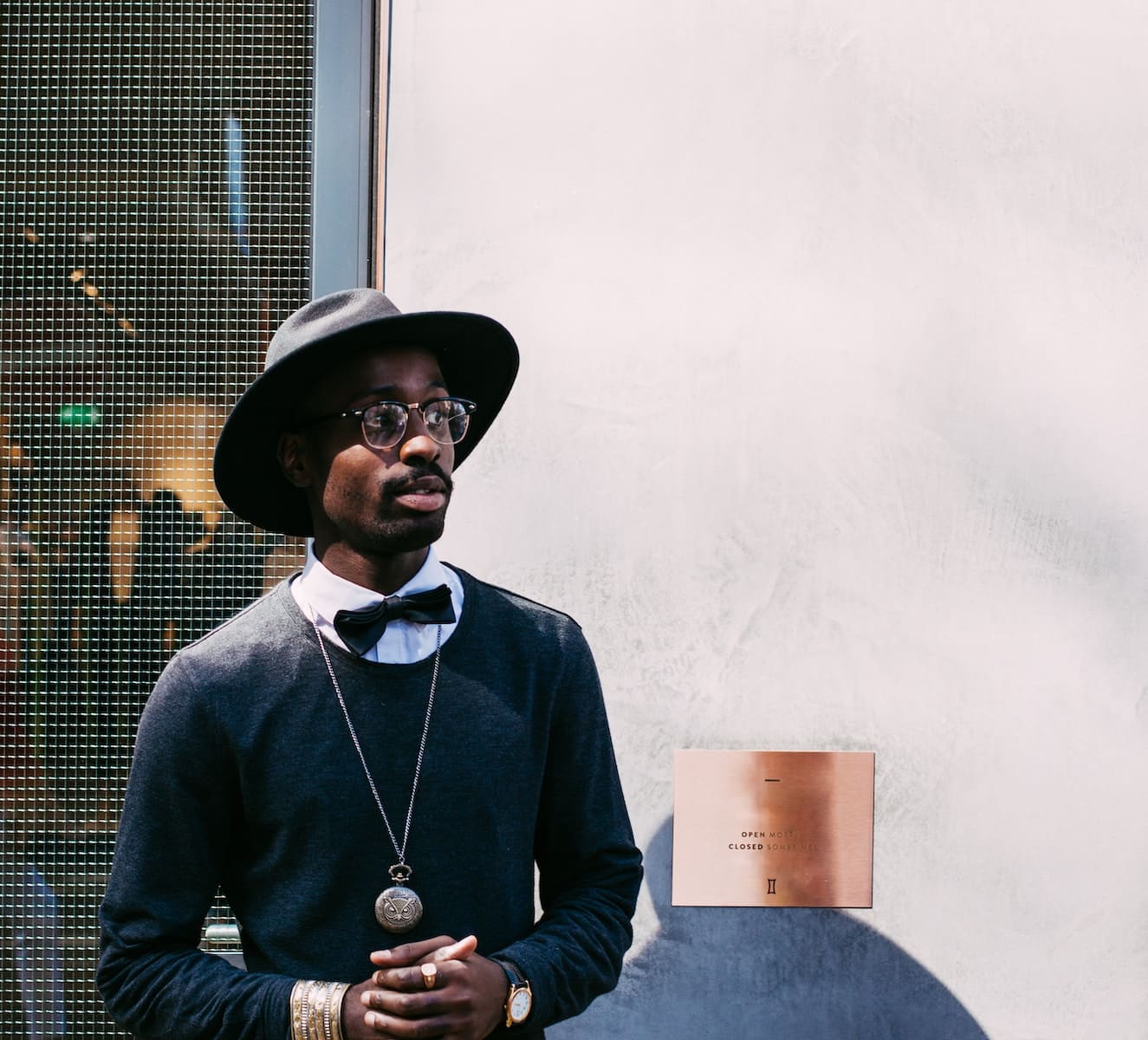
Construction and Design of Bowler Hats
The bowler hat is renowned for its distinctive construction and design elements, contributing to its timeless appeal. Understanding the materials used, key features, and variations in design can provide valuable insights into the craftsmanship and versatility of this iconic headwear.
Bowler hats are typically crafted from felt or wool, which offers durability and a structured form. Felt is made from compressed and matted fibers of wool or fur, while wool is derived from sheep’s fleece. These materials provide the stiffness and shape retention required for the bowler hat’s crown and brim.
The crown of a bowler hat is rounded in shape, with a low profile that sits snugly on the head. It is often made with multiple layers of felt or wool, which are shaped and molded to create the desired curvature. The crown may vary in height, with some bowler hats featuring a taller crown for a more elongated silhouette.
The brim of a bowler hat is another defining characteristic. It is typically stiff and slightly upturned at the edges, providing a distinct visual appeal. The brim’s stiffness helps maintain the hat’s shape and offers protection from the elements. The width of the brim can vary, with some bowler hats featuring a narrower brim for a more streamlined look, while others have a wider brim for a more traditional and classic style.
To enhance the aesthetics of the bowler hat, it is often adorned with a grosgrain ribbon or hatband around the base of the crown. This decorative element adds a touch of elegance and can come in various colors and patterns, allowing wearers to personalize their bowler hats according to their preferences.
While the general construction and design of the bowler hat remain consistent, some variations and adaptations cater to different styles and occasions. For instance, some bowler hats may feature a feather or other embellishments nestled in the hatband, adding a touch of flair and individuality. Certain bowler hats may also have a wider brim, allowing for a more dramatic and statement-making look. These variations allow wearers to express their unique style and personality by choosing a bowler hat.
Moreover, the versatility of the bowler hat’s design extends to its gender inclusivity. While it is often associated with men’s fashion, women have embraced the bowler hat as a bold and stylish accessory. Women’s bowler hats may feature smaller sizes or slight design modifications to cater to different head shapes and styles.
In conclusion, the construction and design of bowler hats showcase the meticulous craftsmanship and attention to detail that goes into creating these iconic headpieces. The use of quality materials, the distinctive rounded crown and stiff brim, and the variety of design variations all contribute to the enduring popularity of the bowler hat. Whether worn by men or women, the bowler hat symbolizes timeless style and sophistication.

Bowler Hats in Pop Culture
Bowler hats have significantly impacted various forms of popular culture, from movies and television to literature, art, and music. Their distinctive appearance and association with certain characters, themes, or movements have cemented their place as iconic symbols in the entertainment industry. This section will explore the presence and significance of bowler hats in pop culture.
Bowler Hats in Movies and Television
One of the most notable instances of bowler hats in pop culture is their association with the iconic character of Charlie Chaplin. In many of his silent films, Chaplin portrayed the beloved character, the “Little Tramp,” who wore a bowler hat as his signature attire. The bowler hat became synonymous with Chaplin’s comedic and endearing persona, adding to the character’s charm and appeal. Chaplin popularized the bowler hat through his films and helped solidify its place in popular culture.
Additionally, bowler hats have appeared in numerous other films and television shows, often serving as visual cues for specific characters or periods; for example, in the film “A Clockwork Orange,” directed by Stanley Kubrick, the bowler hat is worn by Alex and his gang, representing their rebellious and dystopian nature. The bowler hat becomes an iconic symbol within the film, reflecting the unique style and themes explored.
In the television series “Mad Men,” set in the 1960s, the bowler hat is frequently worn by the character of Bert Cooper, a powerful advertising executive. The hat symbolizes his traditional values and distinguished status within the corporate world. This portrayal of the bowler hat highlights its association with a bygone era and visually represents the character’s personality and position.
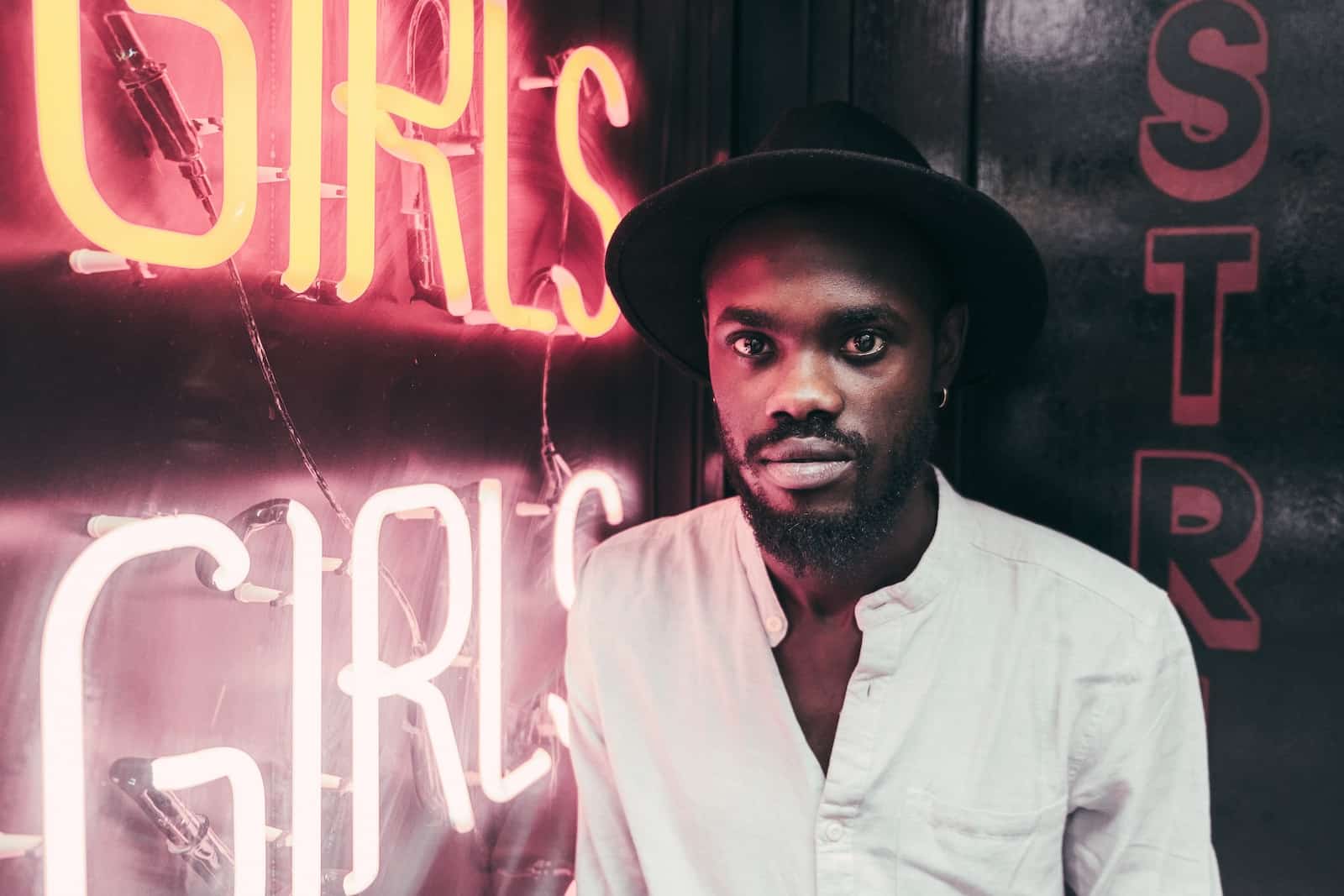
Bowler Hats in Literature and Art
Bowler hats have also found their way into the pages of literature and the world of art, often serving as symbols or motifs within creative works. In literature, the bowler hat has been used to represent various themes, such as conformity, authority, or societal expectations. For instance, in the novel “The Metamorphosis” by Franz Kafka, the character of Gregor Samsa wakes up one morning to find himself transformed into a giant insect. Throughout the story, his bowler hat is a poignant reminder of his former identity and the expectations placed upon him as a functioning member of society.
Bowler hats have been depicted in paintings, sculptures, and other mediums. The most famous representation is perhaps René Magritte’s painting titled “The Son of Man,” which features a man in a bowler hat with an apple obscuring his face. This surreal image has become an iconic symbol of mystery, identity, and the human condition, with the bowler hat serving as a visual anchor within the composition.
Bowler Hats in Music and Entertainment
The influence of bowler hats also extends to the world of music and entertainment. Musicians and performers have often adopted the bowler hat as part of their image, using it to convey a sense of style, character, or artistic expression. For example, the English musician and actor Noel Fielding, known for his work in “The Mighty Boosh” and “The Great British Bake Off,” frequently incorporates a bowler hat into his eccentric and imaginative outfits, adding a touch of whimsy to his performances.
In music, the bowler hat has appeared in album covers, stage costumes, and music videos. Artists such as the British rock band Radiohead, the American singer-songwriter Pharrell Williams, and the British musician Paul Weller have all donned bowler hats at various points in their careers, using them as visual elements to enhance their artistic personas.
In conclusion, bowler hats have left an indelible mark on various forms of pop culture. From their association with iconic characters like Charlie Chaplin’s “Little Tramp” to their appearances in literature, art, music, movies, and television, bowler hats have become symbolic accessories that add depth, meaning, and visual impact to creative works. Whether used to convey a character’s personality, evoke a specific period, or explore deeper themes, bowler hats continue to captivate audiences and contribute to the rich tapestry of popular culture.
Bowler Hats Around the World
While the bowler hat originates in British fashion and culture, it has also become a cultural icon in various countries worldwide. From its significance in British traditions to its adoption in other nations, the bowler hat has a place in diverse cultural contexts. This section will explore the cultural influence and representation of bowler hats in specific countries.
Bowler Hats as Cultural Icons in Specific Countries
- United Kingdom: The bowler hat is special in British culture and traditions. In the United Kingdom, it is often associated with formal events like horse races like the Royal Ascot or social occasions like weddings. The hat’s association with British sophistication and elegance has symbolized traditional style and refinement.
- Argentina: In Argentina, the bowler hat has become an integral part of traditional attire, particularly in the province of Tucumán. The hat is part of the gaucho (Argentine cowboy) outfit, paired with a cape and wide-legged trousers. The gaucho’s bowler hat, known as “bombín” in Spanish, has become an iconic symbol of Argentine folklore and cultural heritage.
- South Africa: The bowler hat has a unique significance in South Africa, specifically among the Zulu people. It is worn as part of the traditional attire for special occasions, ceremonies, and cultural festivals. The hat, known as “Isicholo,” is adorned with colorful beads and feathers, reflecting the rich cultural traditions and pride of the Zulu community.
- Netherlands: In the Netherlands, the bowler hat has found its place in Dutch carnival celebrations. During the carnival season, people dress up in elaborate costumes, and the bowler hat is a popular choice to complete the festive look. The hat adds a touch of whimsy and playfulness to the vibrant and joyful atmosphere of the Dutch carnival.
These are just a few examples of how the bowler hat has become a cultural icon in specific countries. Its adoption and adaptation in different cultural contexts showcase the hat’s versatility and ability to transcend geographical boundaries. The bowler hat’s presence in various countries reflects its enduring appeal and the unique ways it has been embraced as part of cultural traditions.
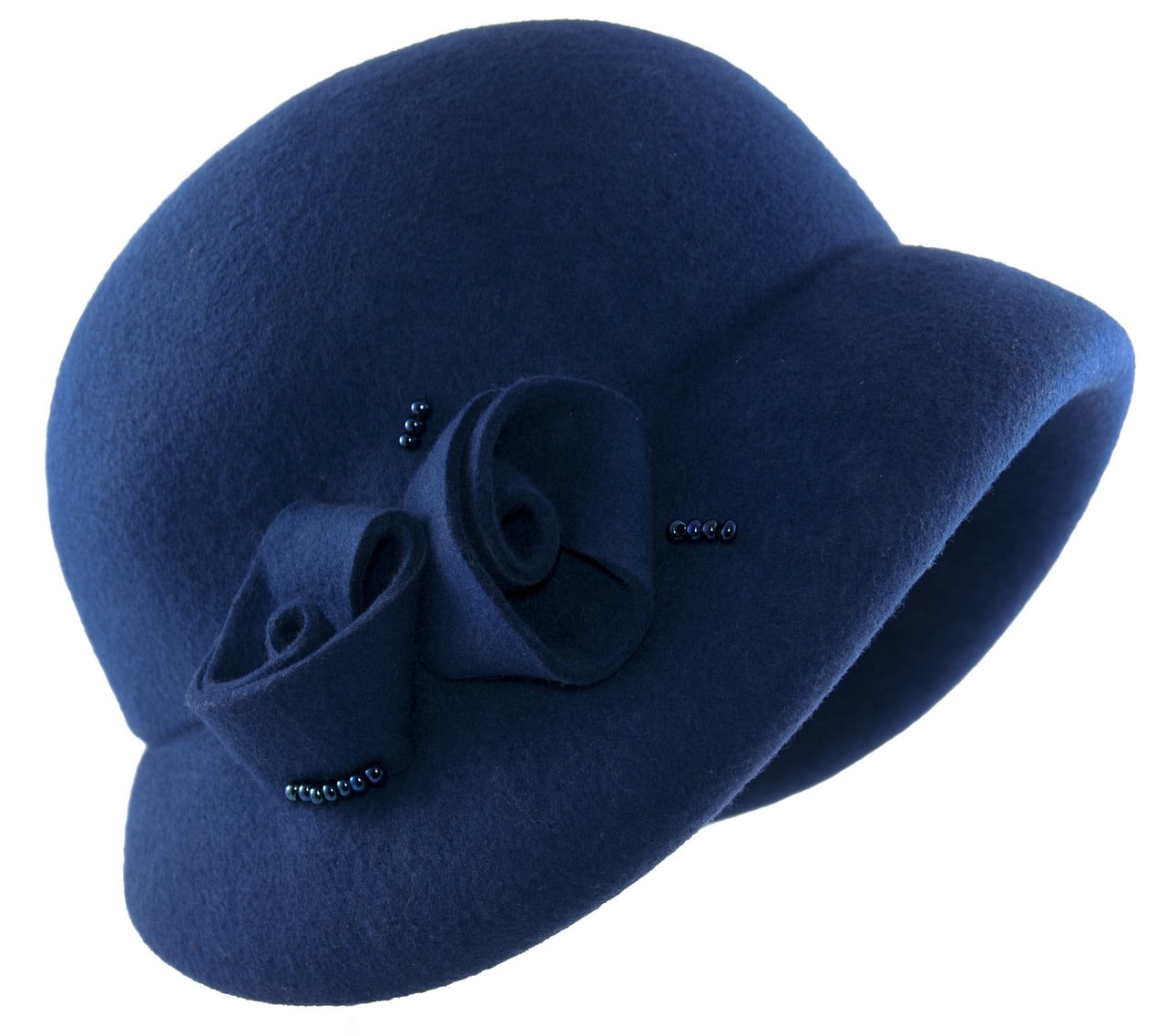
Bowler Hats in Traditional Costumes and Festivals
Apart from being associated with specific countries, bowler hats are often incorporated into traditional costumes and are prominently featured in festivals and celebrations. For instance, in the United Kingdom, the bowler hat is essential to the attire worn during the Lord Mayor’s Show. This centuries-old ceremony celebrates the appointment of the Lord Mayor of the City of London. Participants wear the bowler hat as they march through the streets, creating a visually striking display of British cultural traditions.
In addition, bowler hats are often seen in traditional Bavarian costumes in Germany, particularly during Oktoberfest. The hat, known as “Tirolerhut” or “Gamsbart-Hut,” is worn by men as part of their lederhosen outfit, adding a touch of authenticity and heritage to the festive atmosphere of Oktoberfest.
Moreover, the bowler hat is featured in traditional dances and performances in countries like Colombia and Panama. These cultural expressions showcase the hat’s influence and role in preserving and celebrating cultural heritage.
In conclusion, the bowler hat has transcended its British origins to become a cultural symbol in various countries worldwide. Whether as a representation of formal elegance in the United Kingdom, a vital part of traditional attire in Argentina and South Africa, or a festive accessory in the Netherlands, the bowler hat has found its place in diverse cultural contexts. Its incorporation into traditional costumes and its presence in festivals and celebrations highlight the hat’s enduring appeal and ability to bridge geographical and cultural divides.
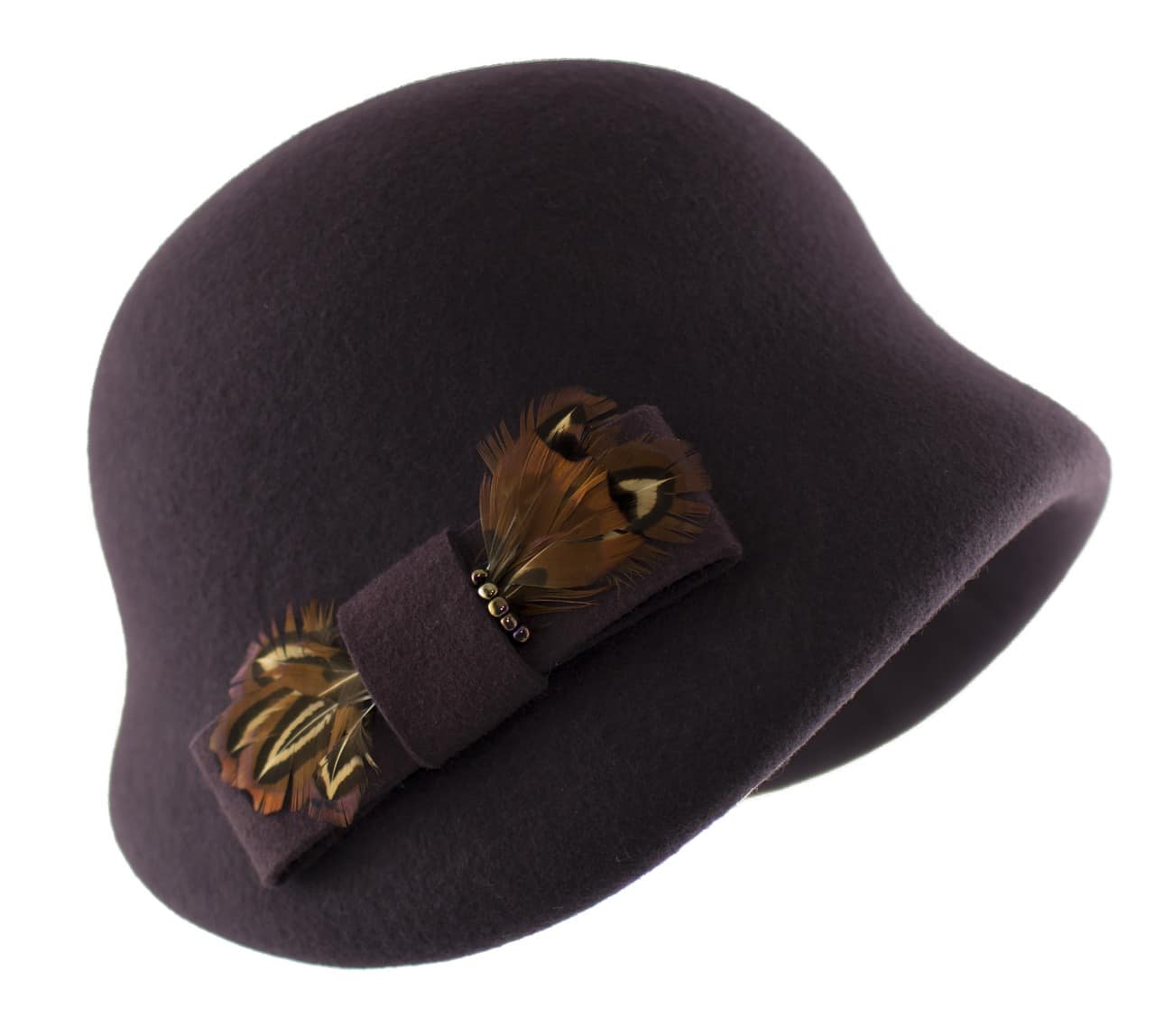
Maintaining and Preserving Bowler Hats
Proper maintenance and care are essential to ensure longevity and continued enjoyment of your bowler hat. Bowler hats, like any other fashion accessory, require attention to preserve their shape, cleanliness, and overall condition. This section will explore valuable tips and techniques for cleaning, storing, restoring, and collecting bowler hats.
Cleaning and Care Tips for Bowler Hats
- Removing Dust and Debris: Regularly remove dust and debris from your bowler hat using a soft brush or a lint roller. Gently brush the surface of the hat in a circular motion, paying attention to the crown, brim, and hatband. This simple step helps maintain the hat’s appearance and prevents the accumulation of dirt.
- Spot Cleaning: Spot cleaning can be effective if your bowler hat has minor stains or marks. Use a clean cloth or sponge dampened with mild soapy water to gently dab the affected area. Avoid excessive water or harsh cleaning agents that may damage the hat’s material. After spot cleaning, allow the hat to air dry naturally.
- Handling with Care: Avoid touching the crown or brim with dirty or oily hands when handling your bowler hat. Oils and dirt can leave marks on the hat’s surface, which may be difficult to remove. Always handle the hat by the brim or the inner lining to minimize the risk of damage.
Restoring and Repairing Bowler Hats
- Reshaping the Crown: Over time, the crown of a bowler hat may lose its shape due to wear or storage conditions. To reshape the crown, steam the hat by holding it over a kettle or using a handheld steamer. Once the felt or wool becomes pliable, gently shape the crown with your hands or using a hat block. Allow the hat to cool and dry in its new shape.
- Repairing Small Damages: If your bowler hat has minor damages, such as loose threads or small tears, these can often be repaired using a needle and thread. Carefully stitch any loose threads or mend small tears to prevent further damage. If you are unsure about the repair process, it is advisable to seek professional assistance from a hat specialist.
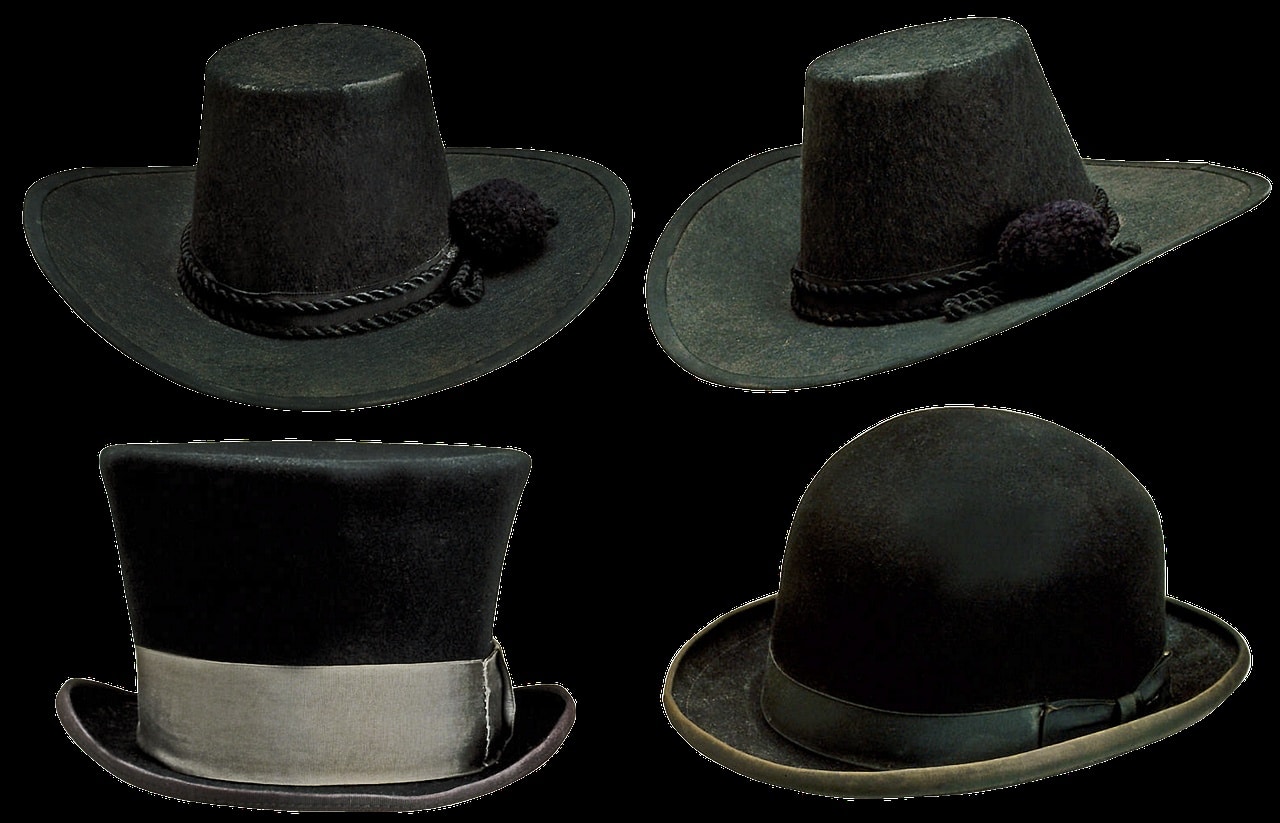
Collecting and Valuing Bowler Hats
- Starting a Collection: If you are passionate about bowler hats, starting a collection can be rewarding. Begin by researching different styles, brands, and historical variations of bowler hats. Look for hats in good condition, paying attention to the quality of materials and craftsmanship. Consider collecting hats with unique features, such as rare colors, decorative hatbands, or historical significance.
- Determining Value: The value of a bowler hat can vary based on factors such as age, condition, brand, and rarity. To determine the value of a bowler hat, it is recommended to consult with experts, hat collectors, or antique dealers with expertise in assessing vintage hats. They can provide insights into the market value and help you make informed decisions when buying or selling bowler hats.
Storage Recommendations
Proper storage is crucial in maintaining the shape and condition of your bowler hat when not in use. Here are some storage recommendations:
- Hat Box: Store your bowler hat in a sturdy box with ample space to retain its shape. Ensure the box is clean and free from moisture. Place tissue paper or a clean cloth inside the hat to help it maintain its form.
- Avoid Compression: Never stack or crush your bowler hat, as this can cause the crown or brim to deform. Store the hat in an upright position to maintain its shape.
- Temperature and Humidity: Keep your bowler hat in a cool and dry environment to prevent mold growth or damage to the hat’s materials. Avoid storing the hat in areas prone to extreme temperatures, humidity, or direct sunlight, as these conditions can degrade the hat over time.
Following these cleaning, care, restoration, and storage tips ensures that your bowler hat remains in excellent condition for years. Whether you are an avid collector or simply enjoy wearing bowler hats, proper maintenance will help preserve their timeless charm and prolong their lifespan.
Conclusion: The Timeless Appeal of the Bowler Hat
Throughout history, the bowler hat has been an iconic and timeless accessory. From its humble beginnings as a practical hat for working-class individuals to its association with refined fashion and cultural significance, the bowler hat has captured people’s imaginations worldwide. Its distinctive construction, design features, and versatility have ensured its enduring popularity in various realms of fashion, pop culture, and cultural traditions.
The bowler hat’s ability to transcend time and geography is a testament to its universal appeal. It has graced the heads of individuals from different walks of life, symbolizing elegance, sophistication, and individuality. From the streets of London to the plains of Argentina and the festivities of the Netherlands, the bowler hat has left an indelible mark on diverse cultures and traditions.
In pop culture, the bowler hat has become an icon in its own right. From Charlie Chaplin’s endearing “Little Tramp” character to its appearances in literature, art, movies, and television, the bowler hat has become a visual symbol that adds depth, character, and meaning to creative works.
Moreover, proper care and maintenance are essential to ensure the longevity and preservation of bowler hats. By following cleaning and care tips, restoring and repairing when necessary, and storing bowler hats correctly, enthusiasts and collectors can continue to enjoy their hats for years.
In conclusion, the bowler hat is special in fashion, pop culture, and cultural traditions. Its history, design, and influence have made it a timeless accessory that continues to captivate and inspire. Whether donned for formal occasions, added to a stylish ensemble, or collected as a cherished item, the bowler hat symbolizes elegance, individuality, and enduring style. Celebrate the enduring charm of the bowler hat and embrace its timeless appeal.
The Timeless Appeal of the Bowler Hat
The bowler hat has stood the test of time and continues to capture the imagination of fashion enthusiasts, history buffs, and collectors alike. Its enduring appeal lies in its unique blend of practicality, sophistication, and cultural significance. With its distinctive construction, design elements, and association with iconic figures and historical moments, the bowler hat holds a special place in fashion.
One of the key factors contributing to the timeless appeal of the bowler hat is its versatility. It can effortlessly transition from formal occasions to casual settings, adding a touch of elegance to any outfit. Whether paired with a tailored suit for a wedding or a more relaxed ensemble for a day out, the bowler hat adds style and individuality.
Furthermore, the bowler hat’s association with historical fashion trends and cultural icons has become a symbol of sophistication and refinement. From the Victorian era, where it was favored by gentlemen and worn by notable figures, to its adoption by Charlie Chaplin as part of his iconic character’s attire, the bowler hat has become synonymous with timeless style and charm.
In contemporary fashion, the bowler hat continues to make an impact. Designers and stylists often incorporate bowler hats into their collections, showcasing their versatility and ability to add a touch of classic elegance to modern looks. Celebrities and influencers also embrace the bowler hat, donning it on red carpets and on social media, further fueling its popularity and maintaining its relevance in the ever-evolving fashion world.
Beyond the fashion realm, the bowler hat’s presence in popular culture, literature, art, and music has solidified its place as a cultural icon. From its representation in films and television shows to its depictions in paintings and sculptures, the bowler hat serves as a visual cue that evokes a sense of time, place, and character.
Moreover, the bowler hat’s cultural significance in specific countries and traditional costumes further reinforces its enduring appeal. Whether the bowler hat’s association with British traditions, its role in Argentine gauchos’ attire, or its prominence in South African Zulu culture, the hat’s presence in diverse cultural contexts highlights its ability to transcend boundaries and become a symbol of cultural heritage.
In conclusion, the bowler hat’s timeless appeal can be attributed to its unique blend of practicality, sophistication, and cultural significance. Its versatility allows it to seamlessly transition between formal and casual settings, adding a touch of elegance to any outfit. Its association with historical fashion trends, cultural icons, and specific countries further enhances its allure. Whether embraced by fashion enthusiasts, worn by iconic characters, or celebrated in cultural traditions, the bowler hat is special in fashion and popular culture.
The Enduring Legacy of the Bowler Hat
As we conclude our exploration of the bowler hat, it is clear that this iconic headwear has left an indelible mark on the world of fashion, pop culture, and cultural traditions. From its humble origins as a practical hat for gamekeepers and horse riders to its elevation as a symbol of sophistication and style, the bowler hat has stood the test of time and continues to captivate and inspire.
The enduring legacy of the bowler hat lies in its ability to transcend trends and remain relevant throughout the years. Its timeless appeal can be attributed to its distinctive construction and design, synonymous with elegance and refinement. The bowler hat’s association with historical figures, cultural icons, and significant moments in popular culture has further solidified its place as a symbol of timeless charm and individuality.
In today’s fashion landscape, where trends come and go, the bowler hat remains a constant reminder of the enduring power of classic style. Its versatility allows it to be worn by men and women, adapting to different fashion sensibilities and occasions. Whether donned as part of a formal ensemble or used to elevate a casual look, the bowler hat adds a touch of sophistication and personality to any outfit.
Moreover, the bowler hat’s presence in popular culture, literature, art, and music has made it an iconic symbol that transcends geographical boundaries. Its appearances in films, television shows, and music videos have immortalized the hat as an instantly recognizable and visually striking accessory.
In art, the bowler hat has been depicted in paintings and sculptures, capturing the imagination of artists and viewers alike.
The bowler hat’s cultural significance in specific countries and traditional costumes further emphasizes its enduring legacy. Whether it is the hat’s association with British traditions, its role in Argentine gauchos’ attire, or its presence in South African Zulu culture, the hat is a powerful symbol of heritage and cultural identity.
In conclusion, the bowler hat’s enduring legacy is a testament to its timeless appeal and versatility. Its distinctive construction, association with historical figures and cultural moments, and ability to transcend trends have solidified its place as a fashion icon. Whether embraced by fashion enthusiasts, celebrated in popular culture, or woven into the fabric of cultural traditions, the bowler hat continues to hold a special place in the hearts and minds of people worldwide.
As we bid farewell to the bowler hat, let us remember its enduring charm and the remarkable story it tells. From its humble origins to its place in fashion history, the bowler hat remains a testament to the power of style and the ability of an accessory to transcend time. So, whether you wear a bowler hat for its fashion-forward appeal or pay homage to its rich heritage, let it remind us of the timeless elegance and individuality that fashion can bring to our lives.


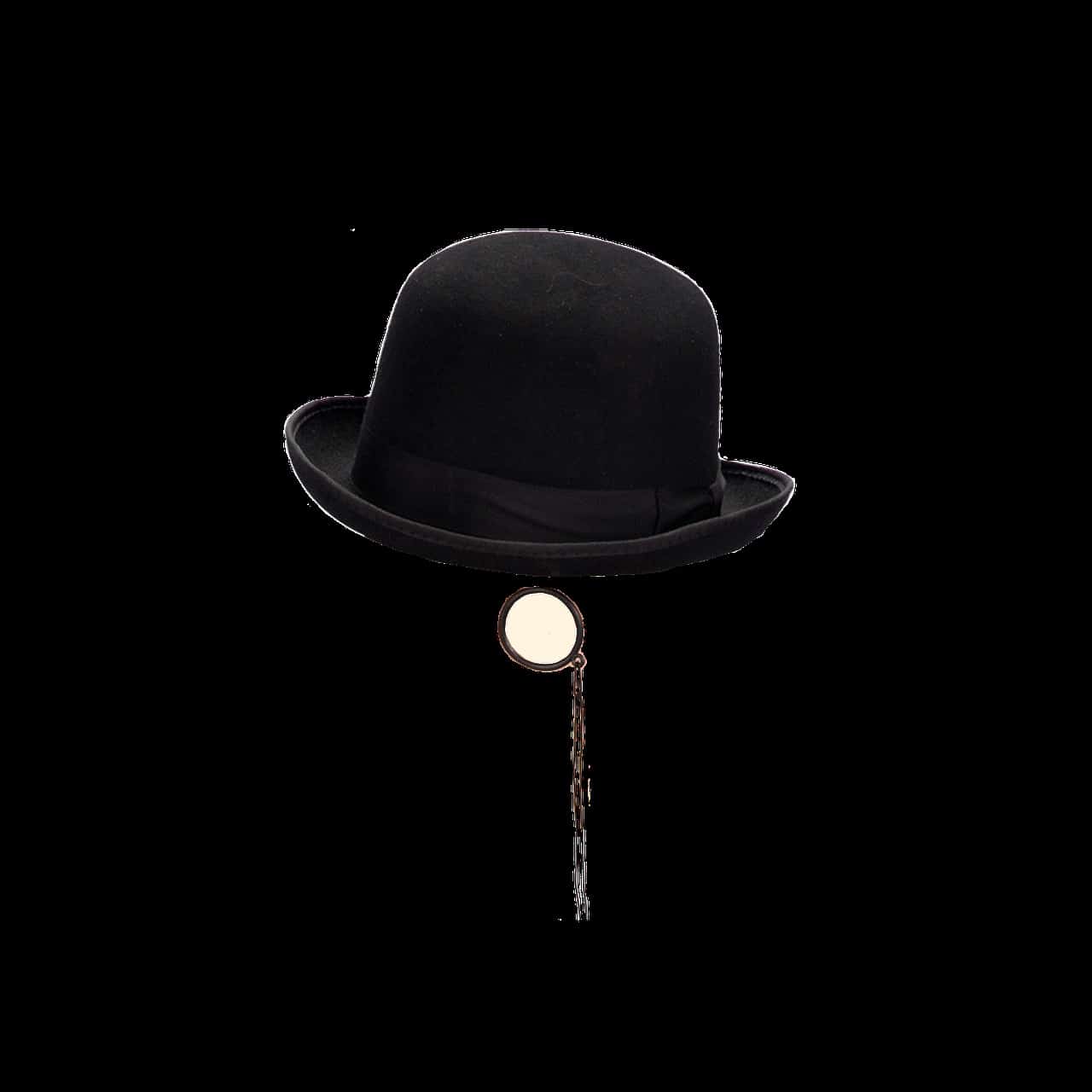



0 Comments